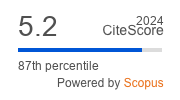Article | Open Access
Generative AI‐Making and State‐Making: Sovereign AI Race and the Future of Digital Geopolitics
| Views: | 1547 | | | Downloads: | 1670 |
Abstract: This article examines how intensifying global competition for sovereign AI, fueled by the rise of generative AI, is reshaping state capacity and digital geopolitics. Drawing on classical theories of state formation, this research introduces the Generative AI-Making and State-Making framework and applies it to four cases—the US, France, Brazil, and Singapore. The analysis shows that strategic pressures from the sovereign AI race compel nation-states to enter a new phase of state-building. Key findings reveal that the intensity of these state-building efforts is directly driven by elites’ perceptions of transboundary competition: the sharper the perceived rivalry, the greater the strategic investment in strengthening coercive, extractive, delivery, and informational capacities. Although states converge in their efforts to augment these capacities, their objectives and methods diverge depending on international position, geopolitical context, and domestic endowments. As a result, the sovereign AI race is not merely a technological contest but also a powerful force reshaping domestic state structures and international power dynamics. It contributes to a more complex geopolitical landscape marked by US–China bipolarity alongside the rise of regional technological powers. By tracing how governments leverage AI to reinforce capacity, this study provides a theoretically grounded perspective on the evolving nature of geopolitical competition in the AI era.
Keywords: digital geopolitics; generative AI; sovereign AI race; state‐building; state capacity
Supplementary Files:
Published:
© Zhenyu Wang. This is an open access article distributed under the terms of the Creative Commons Attribution 4.0 license (http://creativecommons.org/licenses/by/4.0), which permits any use, distribution, and reproduction of the work without further permission provided the original author(s) and source are credited.


